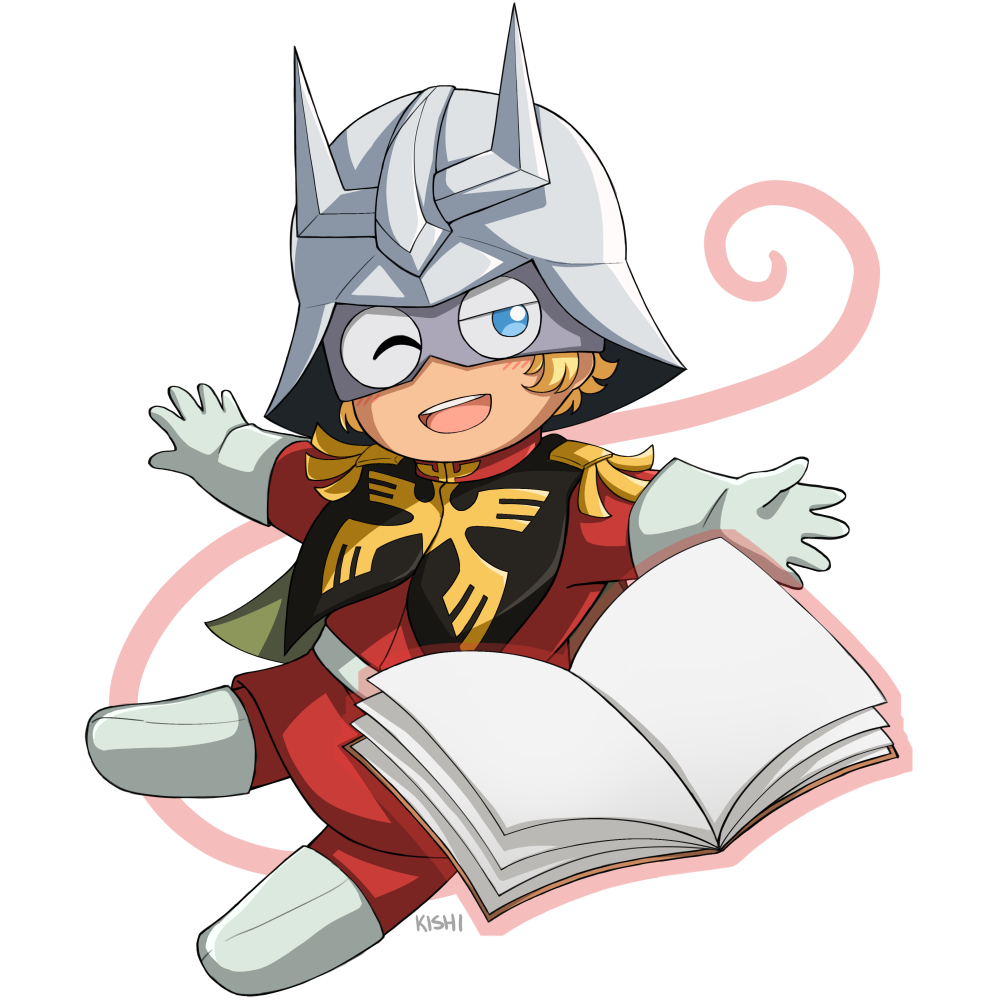The final four comics, and the afterword!
The part covers pages 73 – 106
名古屋の似合うころ (When I was Suitable for Nagoya)
By Naoko Motegi (もてぎなおこ)
Notes
- Satosumi Takeguchi is a shoujo manga artist and author of ワルツの似合うころ (When I was Suitable for Waltz), published in 1982. Here is the cover art this comic is parodying
- Uriou, or uriou-mochi is a chewy and subtly sweet Japanese steamed cake. Flavors include azuki bean paste, green tea, yuzu (a citrus fruit), strawberry and chestnut.
- These are lyrics from the Japanese cover of the song “Song of the Vagabonds” from the operetta “The Vagabond King” (1929) featured in the film “Fall Guy” [蒲田行進曲] (Kamata koushin-kyoku) (1982)
- The composer of the electronic album 太田螢一の人外大魔境 (Oota Keiichi no Jingai Daimakyou). This style is similar to that of the album cover.
- Keith Haring was an American artist famous for his pop art.
Next is an illustration by Crystal Miyabi (クリスタル雅)

Followed by ads for two more books, by 死の翼 (Wings of Death) and KKSM+K.
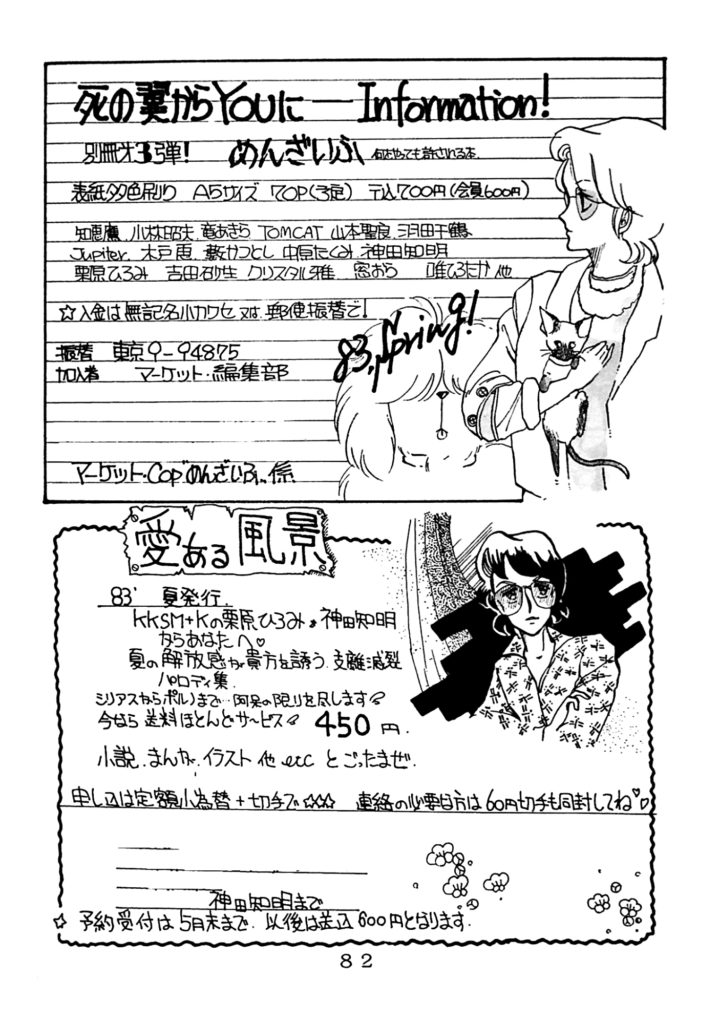
Just a Gigolo
By: Merumo Akashiya (明石家めるも)
Notes
- Just a Gigolo is a 1978 West German drama film starring David Bowie as the character Paul Ambrosius von Przygodski. Hence why Garma’s face is drawn this way.
- Soapland (ソープランド), originally called Turkish Baths, exist as a loophole in Japanese anti-prostitution laws. Customers pay an entry fee to ‘use the bathing facilities’, and a separate fee for a ‘massage’.
- Madam Yang is a brand of quick meals. Here’s a commercial.
- Take-Chan Man is a character from the Fuji Television comedy variety show Oretachi Hyoukin Zoku [1981-1989]
- Another character from the same show. As a side note, the akashiya in the author’s pen name might come from the name of the actor who played the character for most of the show’s run, Sanma Akashiya.
びっくらゲーション (Bikkuragation)
By: Mika Tadano (只野美香)
*Please note this comic includes mentions of animal cruelty and some suggestive themes, though nothing is explicit
Notes
- Bikkuragation is the name of the readers’ submission section of the sub culture magazine Bikkuri House. It’s a portmanteau of the words “bikkuri” (surprise) and “communication”
- Okaasan to Issho is a long running (since 1959) children’s show on NHK
- Hirake! Ponkikki is a children’s show that debuted in Japan in 1973, starring Gachapin and Mukku
- Bun Bun Time (ブンブンたいむ) was a puppet show broadcast on NHK’s Okaasan to Issho from 1979-1982
- Virgin VS was a short-lived early 80’s new wave/synthpop group
- The original word is kintama, meaning testicles
- Reference to a old “game” played by children called Frog Firecracker, カエル爆竹(カエルストロー), where a firecracker was shoved in a frog and exploded. There was also a “frog straw” that you stuck into the frog’s butt and forced air into it to burst it.
- This is referencing Tetsujin 28; betsujin means “stranger”
- Romper Room was an American children’s television series that aired from 1953 to 1994
(No title)
By: CON
It’s listed as “no title” in the table of contents, so I’ll go with that too.
And here’s the ad for the Acrobunch book itself! At the time of this publication, it’s planned to be 80-100 pages and released in 1983. I’ve looked around for it on second hand sites out of curiosity, but no luck yet.
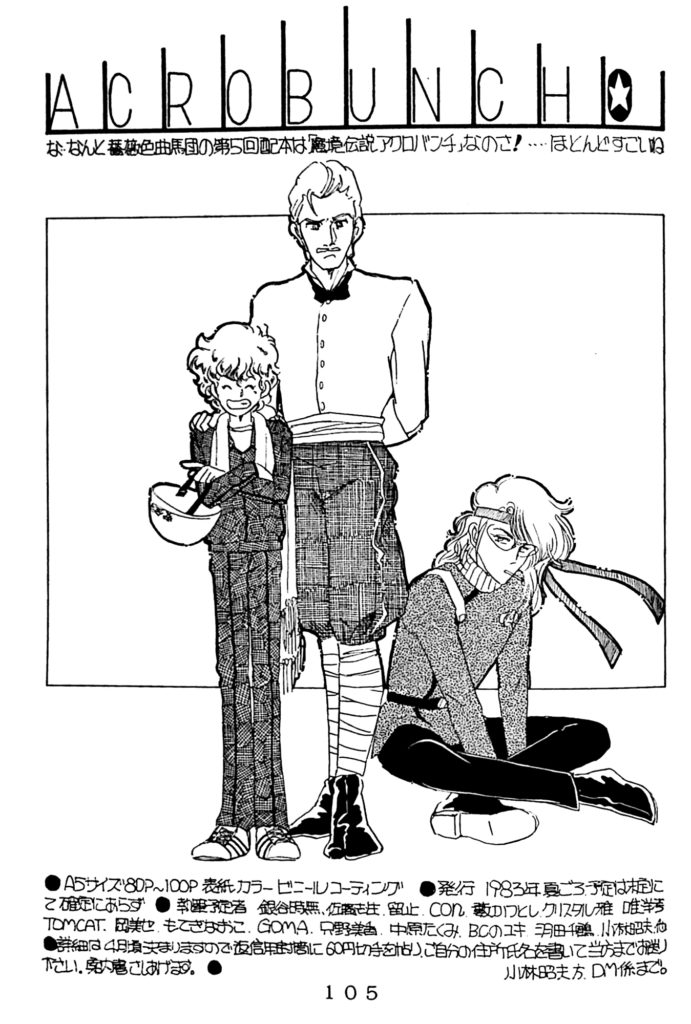
編集後記 (Postscript)
As expected, there’s a short postscript by circle leader Akio Kobayashi.
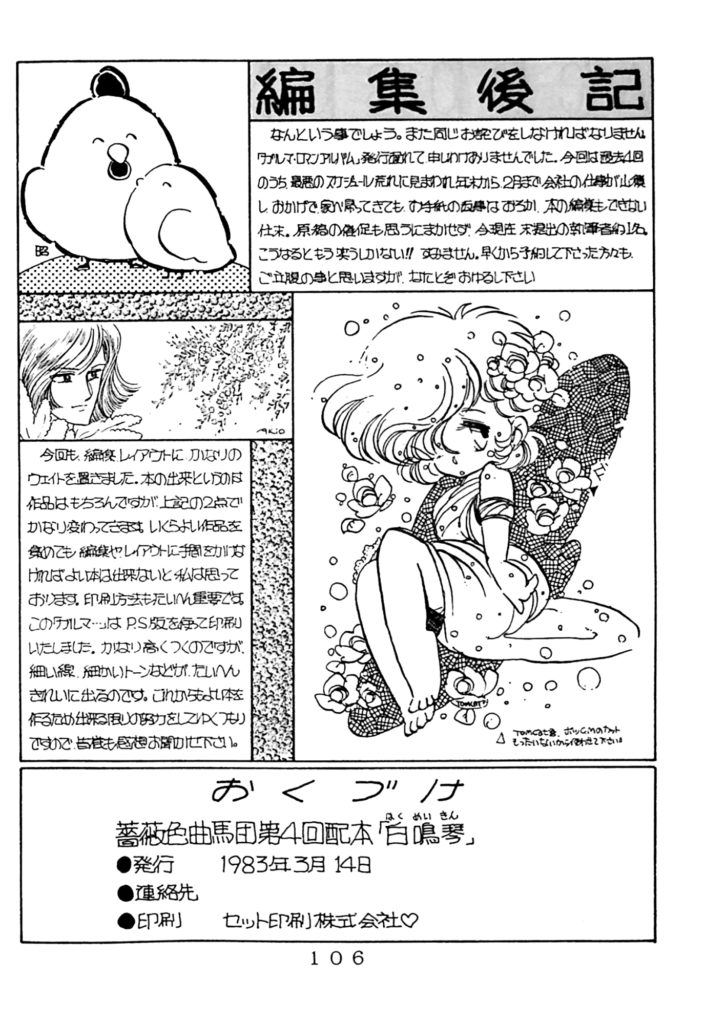
What have I done? I have to make the same apology again. I’m sorry for the delay in publishing “Garma Roman Album”. Out of the last four times, this schedule was the worst, and the company’s work was piled up from the end of the year to February. Thanks to that, even when I came home, I couldn’t even edit the book, let alone reply to the letters. Asking for the manuscripts didn’t go as planned, and there is approximately 1 author who has not yet submitted one. I can’t help but laugh now that it’s come to this! I’m sorry. I know those of you who made reservations early are also upset, but please forgive us.
This time too, I put a lot of weight on editing and layout. The quality of a book depends not only on the works themselves, but also on the two points mentioned above. I believe that no matter how many good works you collect, if you do not take the time and effort to edit and layout them, you will not be able to produce a good book. The printing method is also very important. This Garma book was printed using the PS version. It’s quite expensive, but fine lines and fine tones come out very beautifully. I will continue to do my best to make good books, so please let me know what you think.
(The text under the picture at the right reads: TOMCAT-kun, it’s a waste just to use this as a scrapped ad. Please use it elsewhere.)
One last bonus! Along with the Glasshouse pamphlet, this book also came with a poster, drawn by Kobayashi.
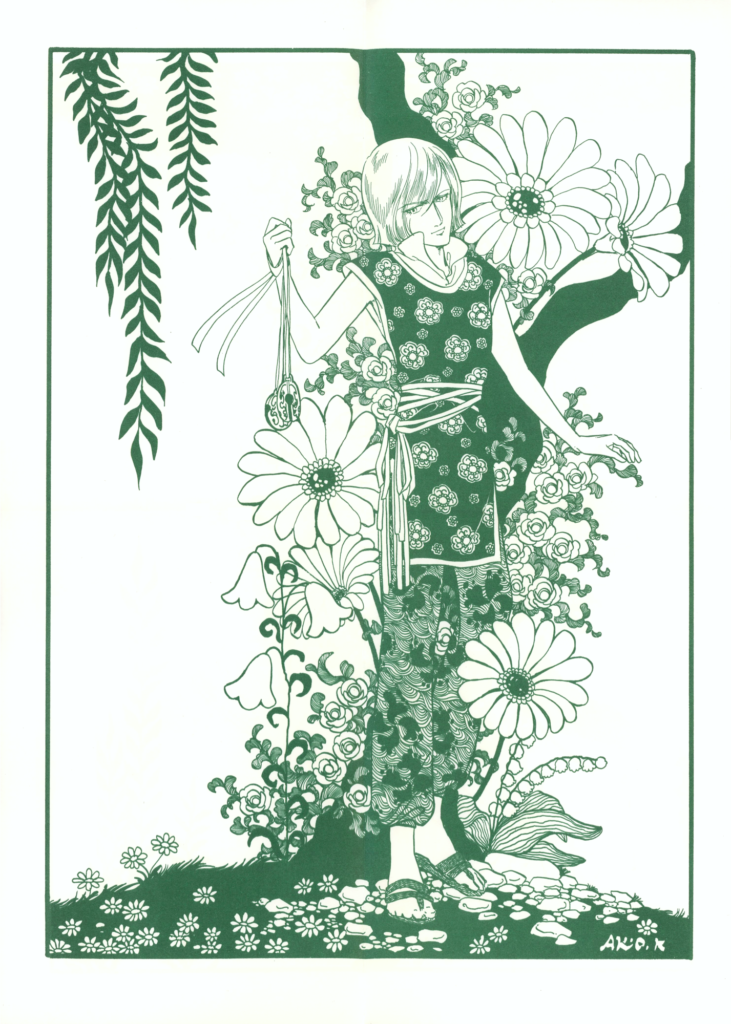
That’s all for White Harp! Thank you for reading.
